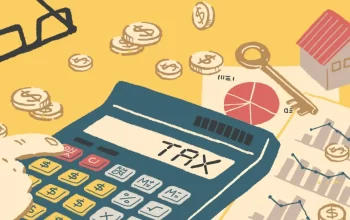When you think of the revenue received by the government, what do you think of? Tax revenue is the amount of money that is collected from individuals or businesses as a result of a legal obligation. Non-tax revenue comes from other sources such as fees charged for government services and interest paid on public-sector loans. The government receives revenue from several areas, including interest on loans, power supply fees, and license fees for certain activities.
As governments increase their activities, the cost of collecting taxes is approaching inefficient levels. Nontax sources of revenue are growing in popularity. Governments at all levels of government have increased their reliance on nontax sources. Nontaxes are now a significant source of revenue, with receipts of all kinds of funds exceeding $40 billion for federal, state, and local governments combined. This makes them second only to income taxes in cash flows.
The two most important types of non-tax revenue are fees and fines. Fees are compulsory payments for a specific service, and the payment must be for a public purpose. Fines are less tax-producing than fines, as they are penalties for breaking the law. And of course, the amount collected in the form of fines is also not tax-deductible. But if you have no idea how to use these sources of revenue, they’re still useful.
Another source of tax and non-tax revenue is federal excise taxes. These taxes are collected on various goods and services and contribute to about 3 percent of government revenue. However, their share has declined dramatically over the years, from 1.7 percent of GDP in the 1960s to 0.5 percent in the 2010s. These taxes are not proportionate to the cost of providing the goods or services that are provided. However, if a government agency charges a fee, the fee should be treated as a tax.
Non-tax revenue is a very important source of funding for governments. In 2015, non-tax receipts represented 6 and a half percent of the government’s total tax collection. Since the 1960s, non-tax revenue has been roughly one percent of GDP, but its level has increased since the recession of 2008.
Despite the critical role that taxes play in fostering sustainable, equitable, and inclusive growth, many countries struggle to collect sufficient revenues. In fact, preliminary analyses show that a developing country will have to increase its revenue collection by approximately 15% of GDP to become financially viable. This is an important threshold, but 69% of FCS countries fall below that level. Therefore, increasing the collection of tax revenue is imperative to sustainable development. With the right policies and incentives, countries can boost tax revenue and foster economic development.
Texas collects tax and non-tax revenue from a variety of activities. For example, taxes are collected from vehicle registration, business regulation, environmental permits, and combative sports admissions. These taxes account for a substantial portion of Texas’ tax revenue, and the state expects that amount to rise in the 2018-19 biennium. The state will also collect tax refunds on unclaimed property. These non-tax revenue sources help pay for public services.








